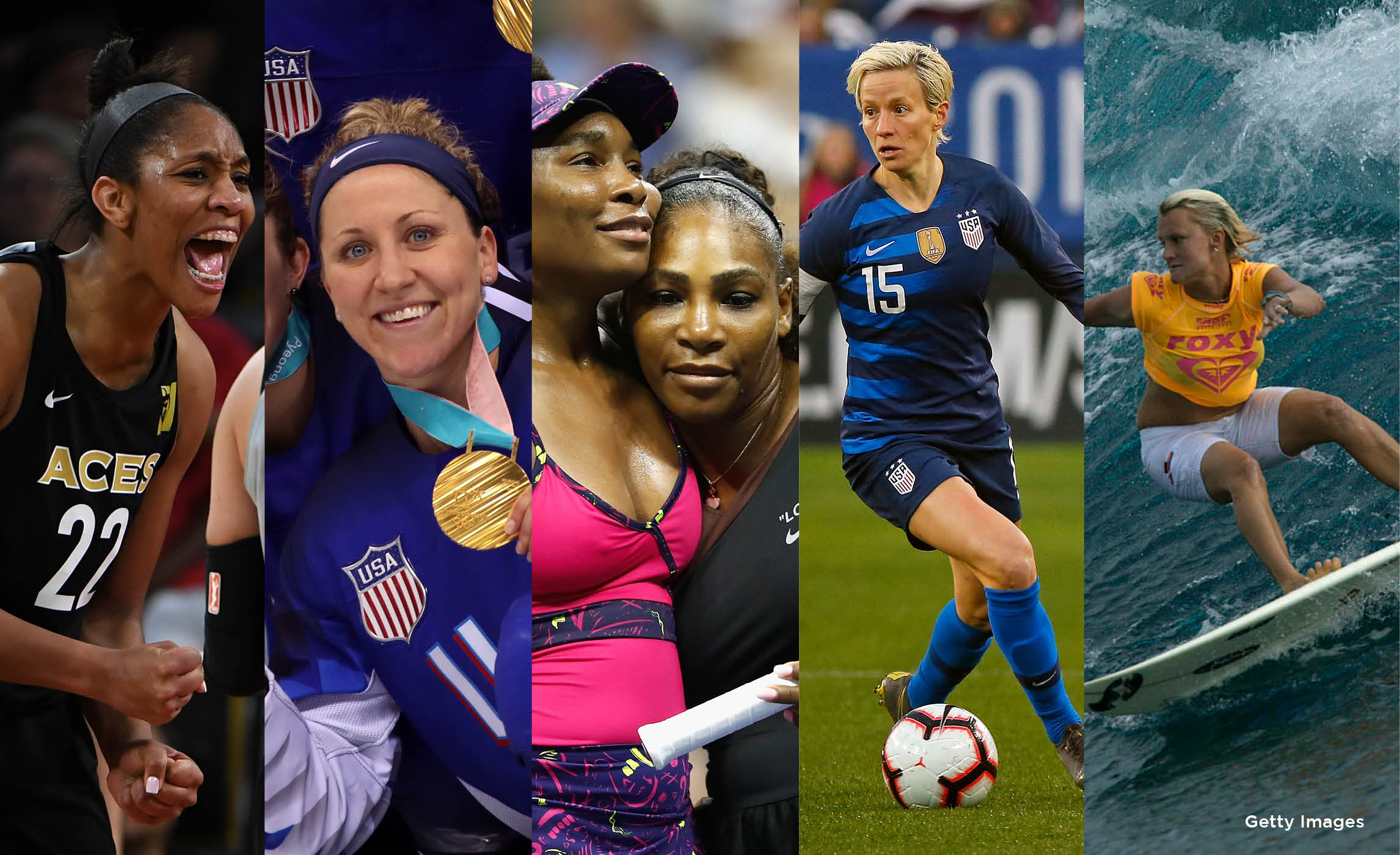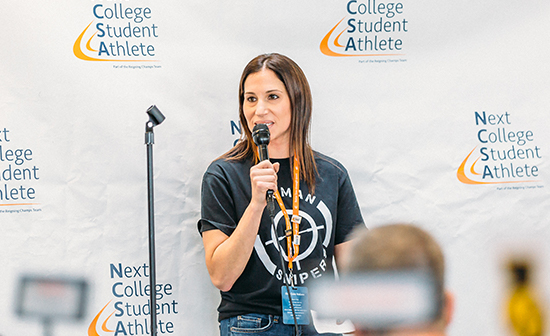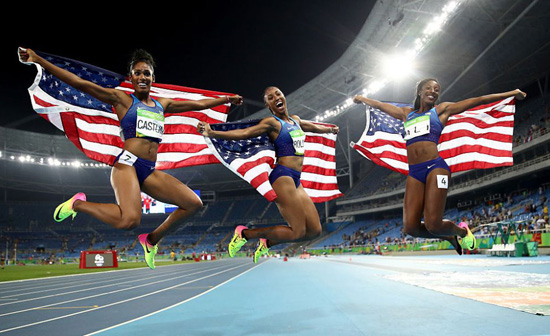April 2 – Equal Pay Day – marks the day U.S. women have finally earned the same amount of money as the average man did in 2018. Sports have long mirrored society, and the gender pay gap has persisted in athletics just as it has in the professional realm. And in sport, just as in society, women are fighting back, working towards the day when pay equality is achieved.
Here are five athletes, teams and leagues that are leading the charge:
The U.S. Women’s National Soccer Team (USWNT)
The USWNT has long been associated with leading the way in the fight for gender equity in soccer. Most recently, in advance of the 2019 FIFA Women’s World Cup in France, the United States women’s squad took a stand against “institutionalized gender discrimination” against the team. Twenty-eight members of the current national team pool announced in March that they are suing U.S. Soccer, seeking equitable pay and treatment, including damages for back pay.
The women’s team has far exceeded the success of their male counterparts, who failed to even qualify for the FIFA Men’s World Cup in 2018. Meanwhile, the women have placed in the top three teams in every Women’s World Cup since 1991 (when the women’s tournament began) and has three titles. In the six Olympic Games that have included women’s soccer, the U.S. has captured four golds and a silver.
“It’s a heavy responsibility, but it’s one that we gladly take on,” Becky Sauerbraunn told ESPN following the 2019 SheBelieves Cup. “And it’s something we’re going to keep trying to push and push and push until we feel that everything is equal. That’s far away from here, but that’s what we’re fighting toward.”
At the same time, The Guardian recently reported that in the 2018 fiscal year, USWNT head coach Jill Ellis was paid less than several U.S. Soccer men’s coaches, including U-20 coach Tab Ramos.
The U.S. Women’s National Ice Hockey Team
Before winning a historic gold medal in the 2018 PyeongChang Olympic Games, the U.S. Women’s National Ice Hockey Team was battling off the ice for equal pay. In 2017, the team threatened to boycott the 2017 IIHF World Championships if a settlement was not made with USA Hockey for equal treatment to the men’s team. Per The New York Times, the women’s players were barely making living wages and were left out of pre-Olympic marketing plans despite their success on the ice.
Ahead of the 2017 IIHF World Championships, after a yearlong battle, USA Hockey conceded to many of the players demands. The team went on to earn the gold at the world championships, then captured its first Olympic gold in 20 years by defeating Team Canada in PyeongChang.
Of her team’s fight for equal treatment, star forward Hilary Knight said: “We’re passionately pursuing something for the greater good.”
WNBA Players
WNBA stars including A’ja Wilson, Brittney Griner, Liz Cambage and Skylar Diggins-Smith have all spoken out about WNBA salaries compared to their NBA counterparts. In order to make a living playing basketball, most WNBA players compete overseas during the offseason to supplement their WNBA income.
It is important to note that the WNBA athletes are not asking for the multimillion dollar contracts that are prevalent in the NBA; they are simply asking for equity. Where the NBA pays its players between 49-51 percent of the league’s revenue, WNBA players take home a maximum of 22.8 percent.
“As athletes, we have to fight. As women, we have to fight,” Diggins-Smith told Bleacher Report. “And we need more people at our table to fight with us,” she told Wealthsimple. “There need to be more women and more people of color hired so we can curate our own sports stories. And we need men speaking out about these things.”
Big Wave Surfers
In 2016, six female big wave surfers – Andrea Moller, Bianca Valenti, Keala Kennelly, Paige Alms, Karen Tynan and Sabrina Brennan – founded the Commission for Equity in Women’s Surfing (CEWS). The organization exists to increase “the number of events and the number of awards for women, as well as offering equal prize money … to achieve meaningful equity in competitive surfing.”
In 2018, much of CEWS’ work paid off, as the World Surf League announced equal prize money for all WSL-controlled events in 2019 and beyond, a huge step for what has been a traditionally male-dominated sport.
“”We feel strongly that if it hadn’t been for our consistent advocacy, the WSL would not have made that announcement,” Brennan told ESPN. “But we are so glad they did, and we’re thankful because they could have done less … But they did the right thing and did it across all of their events.”
Venus and Serena Williams
While all four of the major Grand Slam tennis tournaments have awarded men and women equal prize money since 2007 when Wimbledon finally evened its pay gap, the game’s biggest female stars have not held back when it comes to speaking out about equal pay.
As with so many other female athletes – and despite being two of the highest paid women athletes in the world – Venus and Serena recognize that they are fighting not only for themselves, but for the generations of women to come.
“We might not get it today, but we want a future better for maybe my daughter, or her daughter, and so that’s what we really are fighting for,” Serena told CNBC. “I feel like we’re getting there.”
Photo credit (from L to R):
Ethan Miller/Getty Images
Bruce Bennett/Getty Images
Julian Finney/Getty Images
Frederick Breedon/Getty Images
Pierre Tostee/Getty Images



